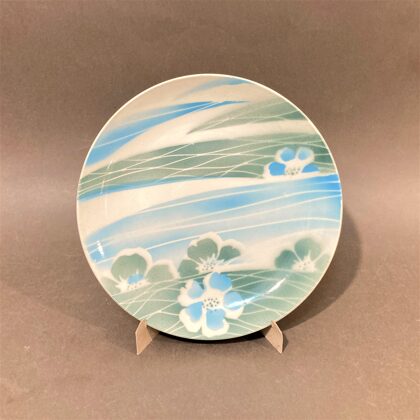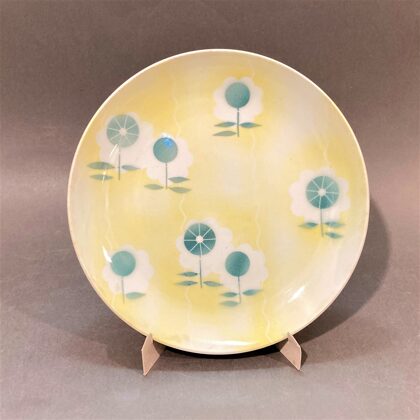Faience plates
The name of faience stems from Italian town of Faenza, famous for its pottery since Middle Ages.Technically, faience is either an object made of a light-colour clay, covered with a white glaze or an object made of white clay and covered in translucent glaze. Faience is more porous than porcelain. There are two types of faience – hard faience and soft faience (half-faience). For hard faience, the crumb porosity measures 9-12%, whereas for the soft one it is 19-22%. Porosity, easier absorption of humidity and fragility to cold are the reasons for characteristic defects of faience tableware – cracks, stains of various colours and general fragility.
Kuznecov factory in Riga begun its production with half-faience objects. Mid-19th century was the period of proliferation of half-faience, explained by its lower price when compared to porcelain and ever-growing consumer demand. After the Second World War the factory was renamed “Riga porcelain and faience factory” (as seen in the stamp of those years PFF RĪGA) and faience was produced in Riga until 1968.
In 1960s a widespread finishing technique was spray-painting the faience tableware and by applying a sequence of stencils, a skilful painter was able to achieve a great artistic effect.
Dear friends of porcelain – I present to you a selection of PFF Rīga faience plates. The diameter of round plates is 25cm.











